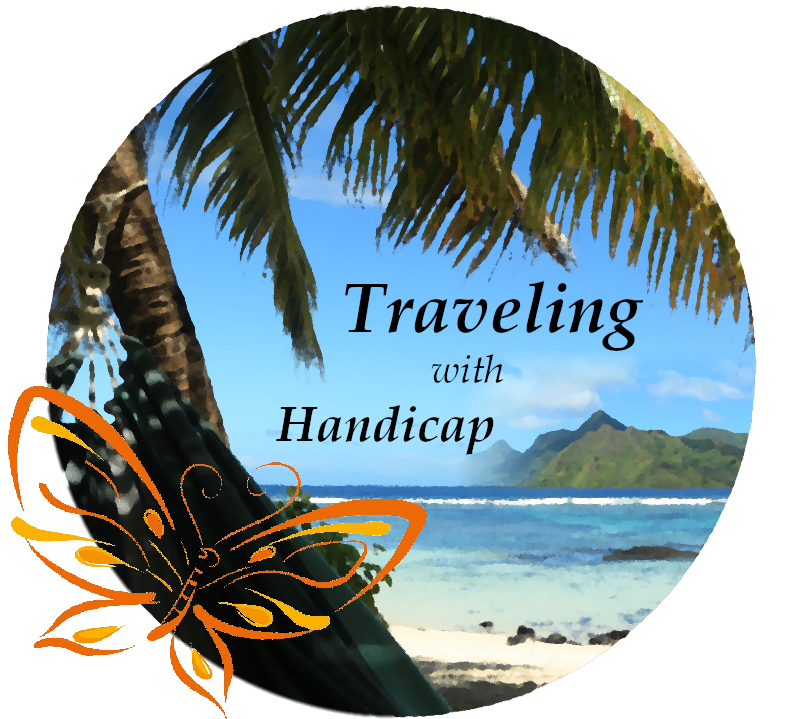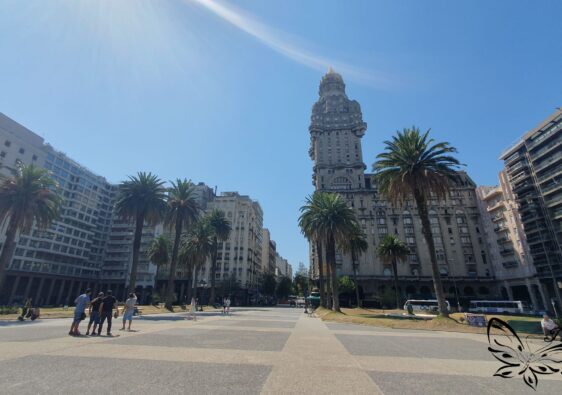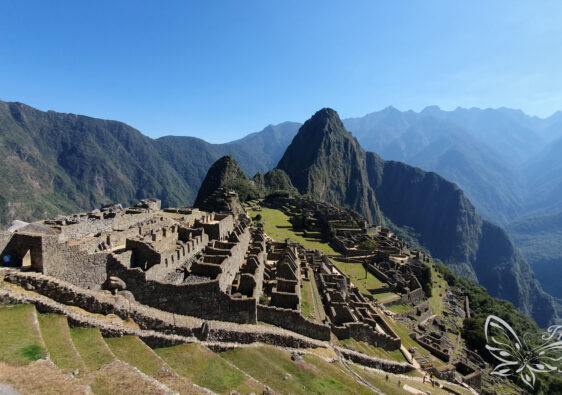Happiness is not a station you arrive at, but a manner of traveling
— Margaret Lee Runbeck —
Important Notes for leaving Mongolia by train
Handling of Mongolian currency
It is not permitted to take any Mongolian currency out of the country and, moreover, it is extremely difficult to exchange (if possible at all). Therefore, try to exchange your remaining Tögrög to Russian Roubles before heading to the station. Starting in Ulaanbaatar, you will (most likely) stop in Dzun Khara and Darkhan before reaching the border city of Sukhbaatar. I exchanged as much Tögrög into Roubles as possible and kept the remaining few Tögrög to spend on sweets at one of the stops.
Getting to Ulaanbaatar Station
Keep in mind that the traffic is terribly chaotic during the (extended) rush hour in Ulaanbaatar. Cars will just move into any space available, wherever they can fit in, never leaving more than a few centimeters of space to the next car. Journeys of only a few kilometers will most likely one hour or more by car, so plan with a lot of spare time. If you stay somewhere close to the train station, and you would feel okay walking that distance while carrying your luggage, you might as well do so. If possible, walking saves you a lot of time compared to driving within Ulaanbaatar.
I stayed in a hotel close to the station, intending to walk there. However, this was not possible due to very heavy rain. Ulaanbaatar occupies too many people for its size, so the heavy rain flooded its streets. A guy from the hotel gave me a ride to the station, where I faced the next challenge. Due to the high load of cars, only a limited number of cars may use specific streets. Your number-plate defines the day of the week when you are allowed to use those streets. That car didn’t have the “number of the day”. Therefore, I had to get off outside the flooded parking. Thanks to my hiking boots, I stayed almost dry.
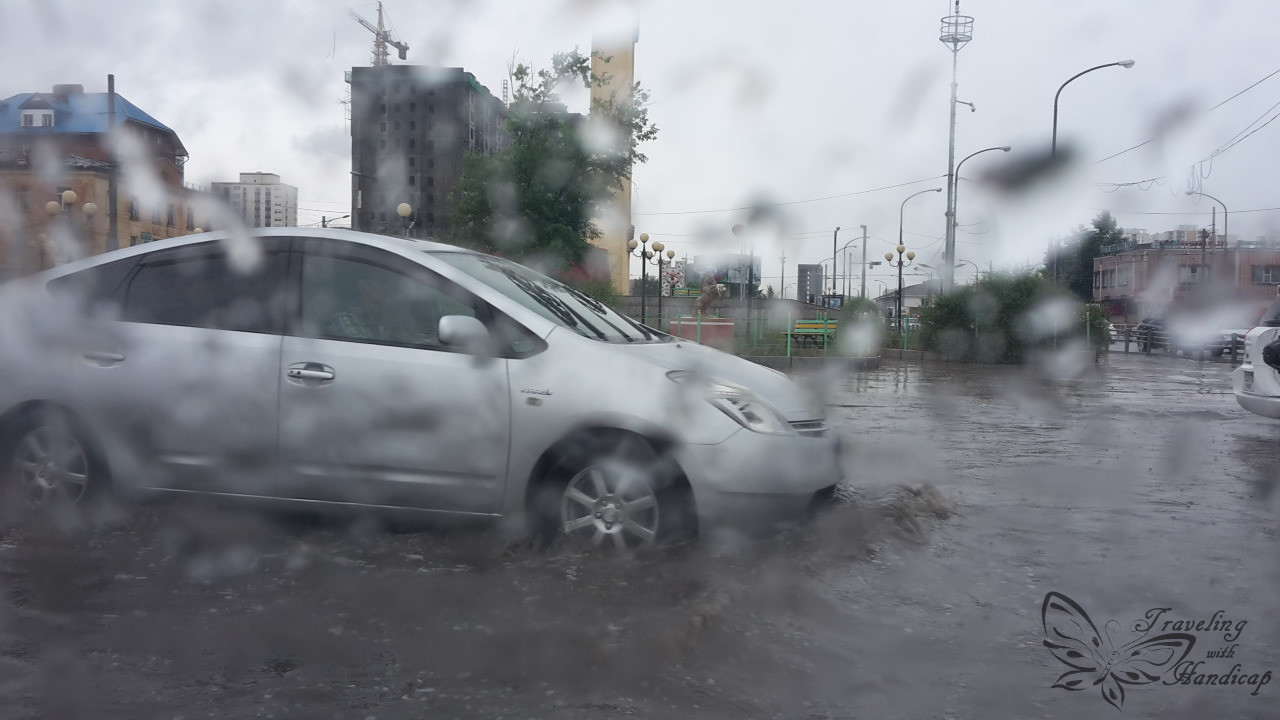
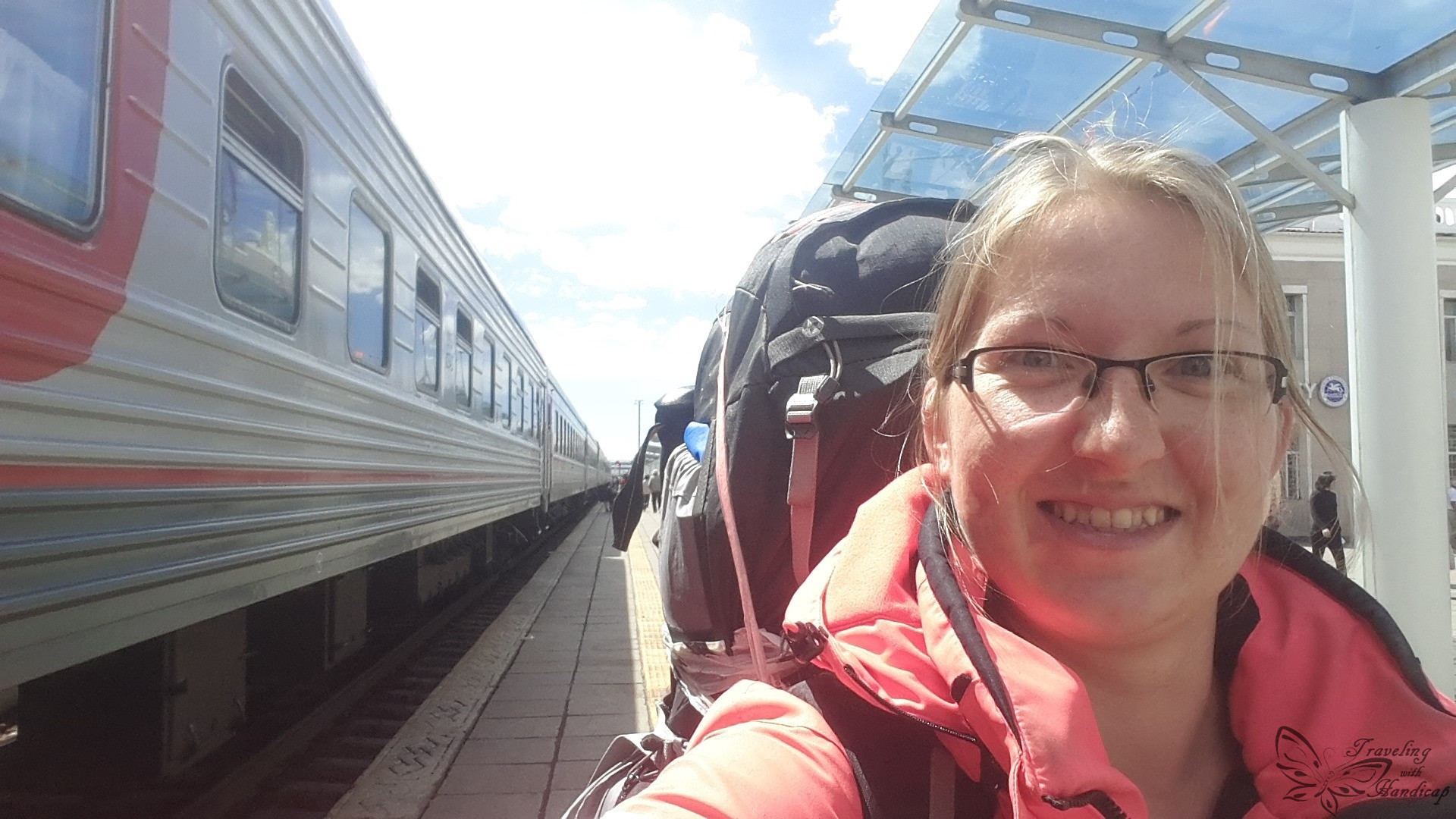

Train connections to Russia
There are plenty of trains available to the Russian border (Sukhbaatar) or crossing the border and continuing their journey to Irkutsk. Depending on the train you book, you will stop at more or less stations within Mongolia and Russia. There are also different options regarding sleeping classes, not all available in each train. Some trains only consist of seating options, others have sleeping cabins with 4 to 6 berths. Any more train-specific details are available in my article on the Trans-Mongolian Railway. Pay attention to the actual time of the border-crossing of your train, since this is relevant for visa dates.
Accessibility
The trains are not accessible by wheelchair users. Anybody who needs support in walking should either not travel alone or feel safe to request help by the staff. On my trips, the staff never spoke English, so I had to use my hands to communicate with them. More information on accessibility can be found in my article on the Trans-Mongolian Railway.
Traveling the Trans-Mongolian railway within Mongolia
Train Option #305
I took train #305 to travel from Ulaanbaatar to Irkutsk. I stayed in a carriage with 4-berth cabins only. All carriages had ample power outlets. Back when I was traveling, no Wi-Fi was available on the train, some 3G/4G coverage was possible within inhabited areas but patchy. Moreover, the train provider supplied all required bedding, consisting of sheets, a pillow, and blankets. The train remained cozy and warm, so you might grab a jumper or jacked before jumping off at stops. Bathrooms with toilets were available at the end of each carriage. Note that the bathrooms are not useable within a certain distance of towns because the toilets empty directly to the tracks below.
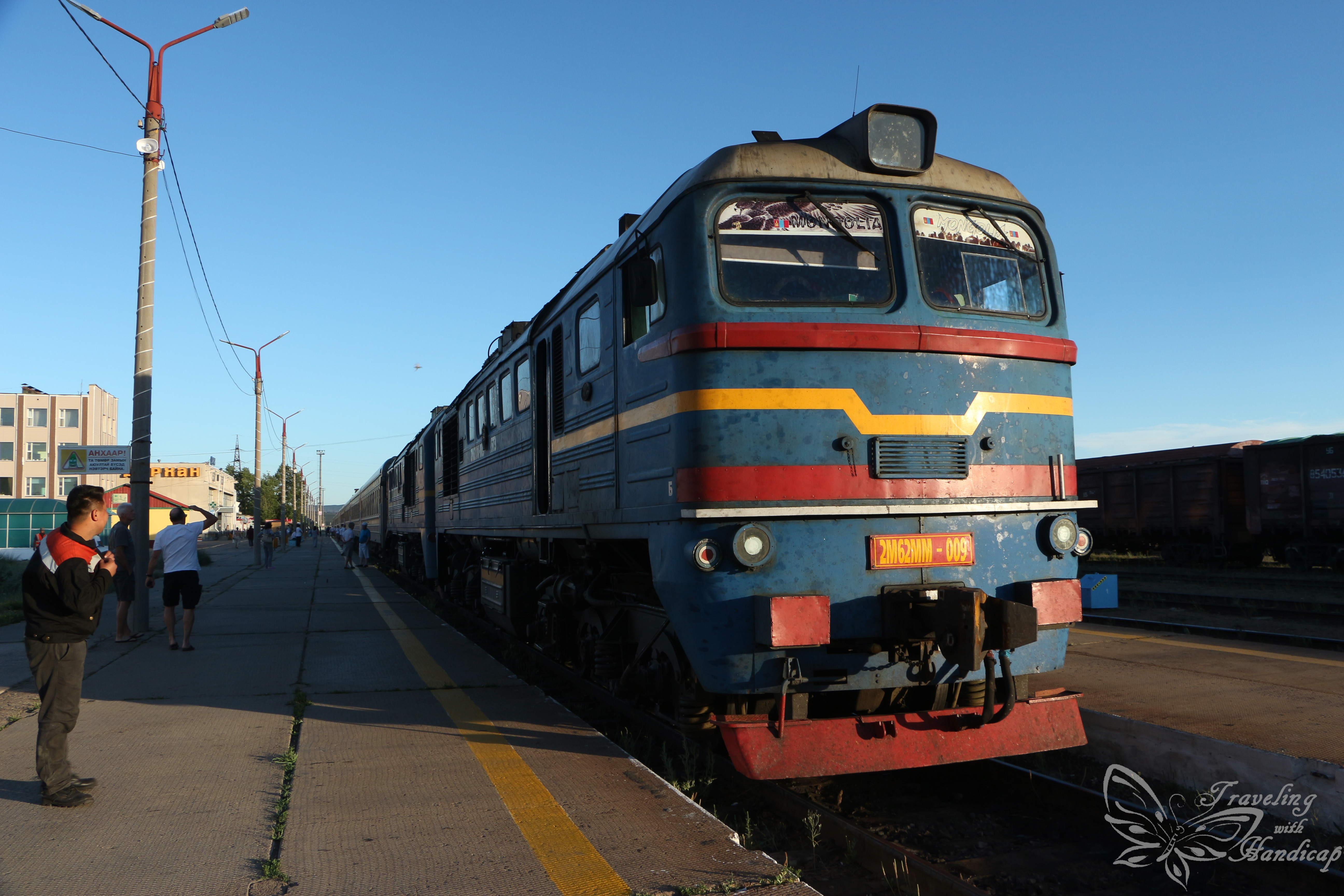
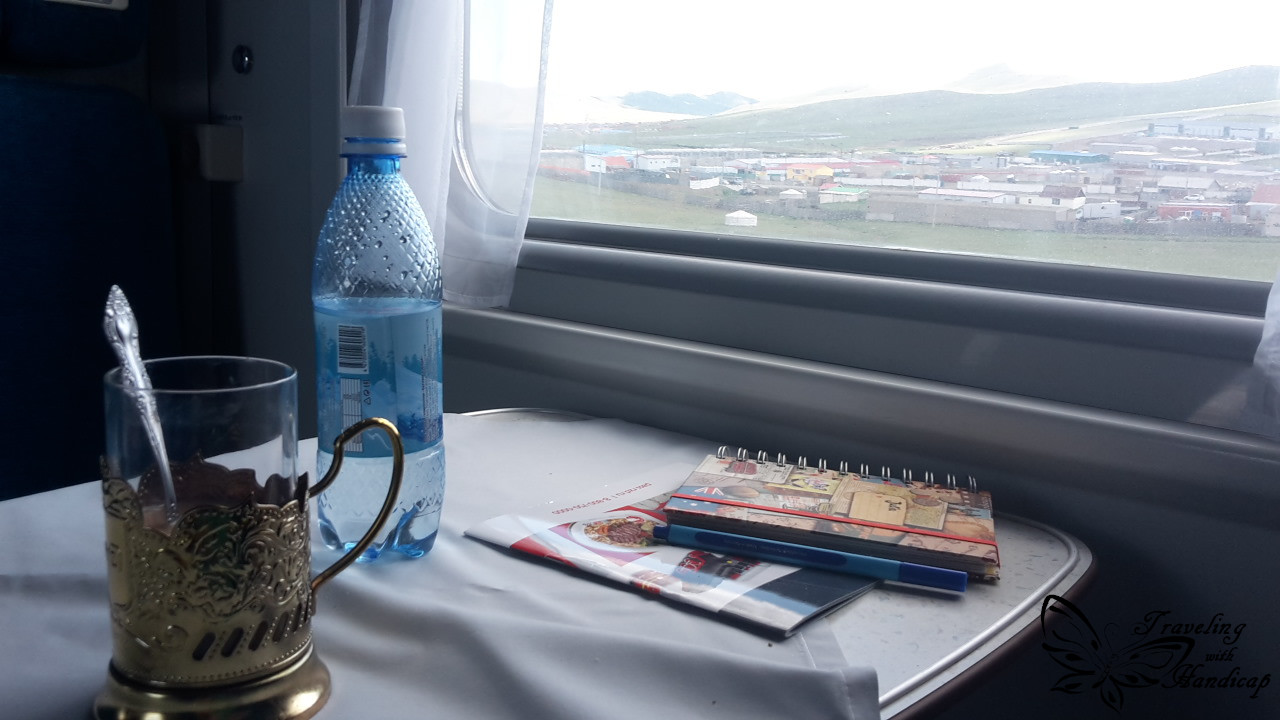


The Journey from Ulaanbaatar to Dzun Khara
As soon as we left dirty, industrial, and overpopulated Ulaanbaatar behind, the surrounding landscape turned into a nice and smooth green. The further north we got, the more trees were surrounding us. I even recognized conifer forests similar to the Gorkhi-Terelj National Park.
I shared a 4-berth cabin with a girl and an old and wise man who travels around by train. The girl was a tour guide for a group of people staying in other cabins within the same wagon. She sat together with her tour people most of the time, so the elder man and me had a whole cabin for ourselves. We were reading, listening to music, keeping silent or talking to each other. I am still impressed by the stories this man shared with me about his life.
Similar to the train from Beijing to Ulaanbaatar, there was a hot water supplier (samovar) available but no restaurant carriage. Therefore, I was even more prepared with instant noodles /dishes this time. I did not expect women selling dumplings along the tracks only a few hours after starting the journey, especially it was late evening already. I rather used my remaining Tögrög to buy some sweets in a little store at the tracks in Dzun Khara.
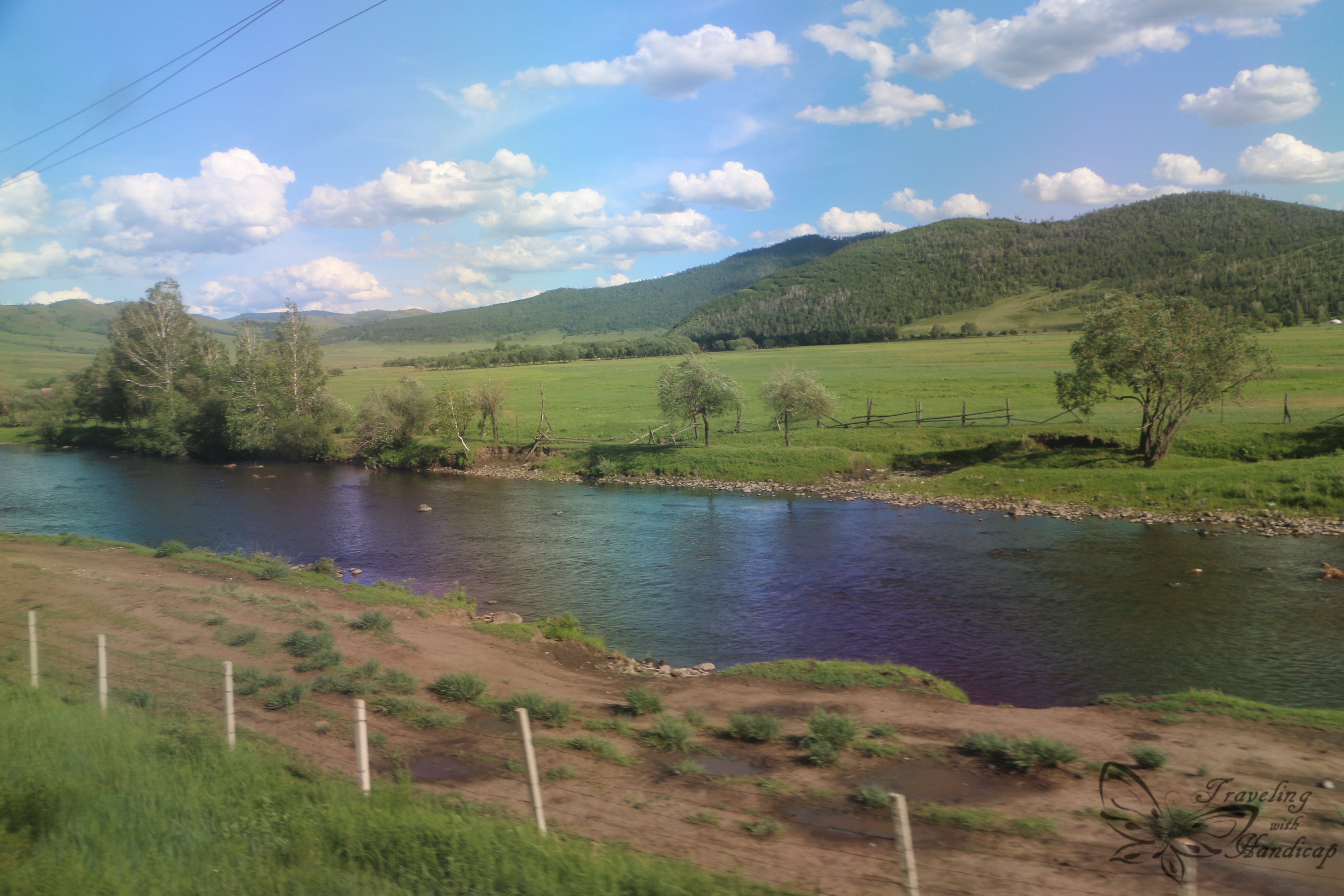
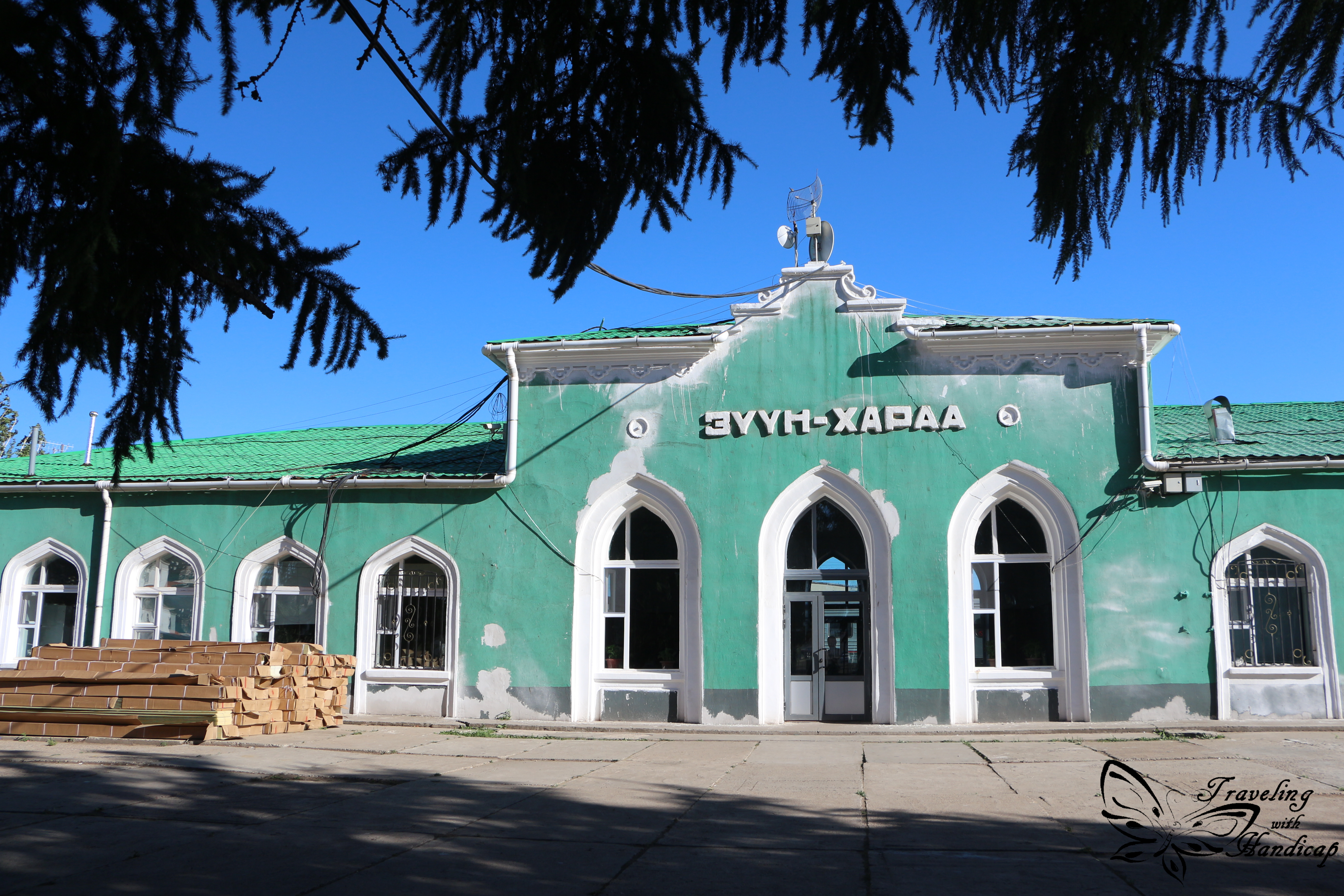
Darkhan and Sukhbaatar
While we stopped in Dzun Khara for 15 minutes only, we had 30 minutes available in Darkhan. One guy from my Gobi-Tour once spent a few months working close to Darkhan during his studies of forestry. Darkhan is the third-biggest city within Mongolia and impressed me by the amount of similar communist-era houses. We left Darkhan just before sunset, with the train track following a river until it got dark. I snuggled into my blanked without sleeping, since the stop in Sukhbaatar was approaching. When we arrived in Sukhbaatar during dark hours, only the building for border controls was visible.
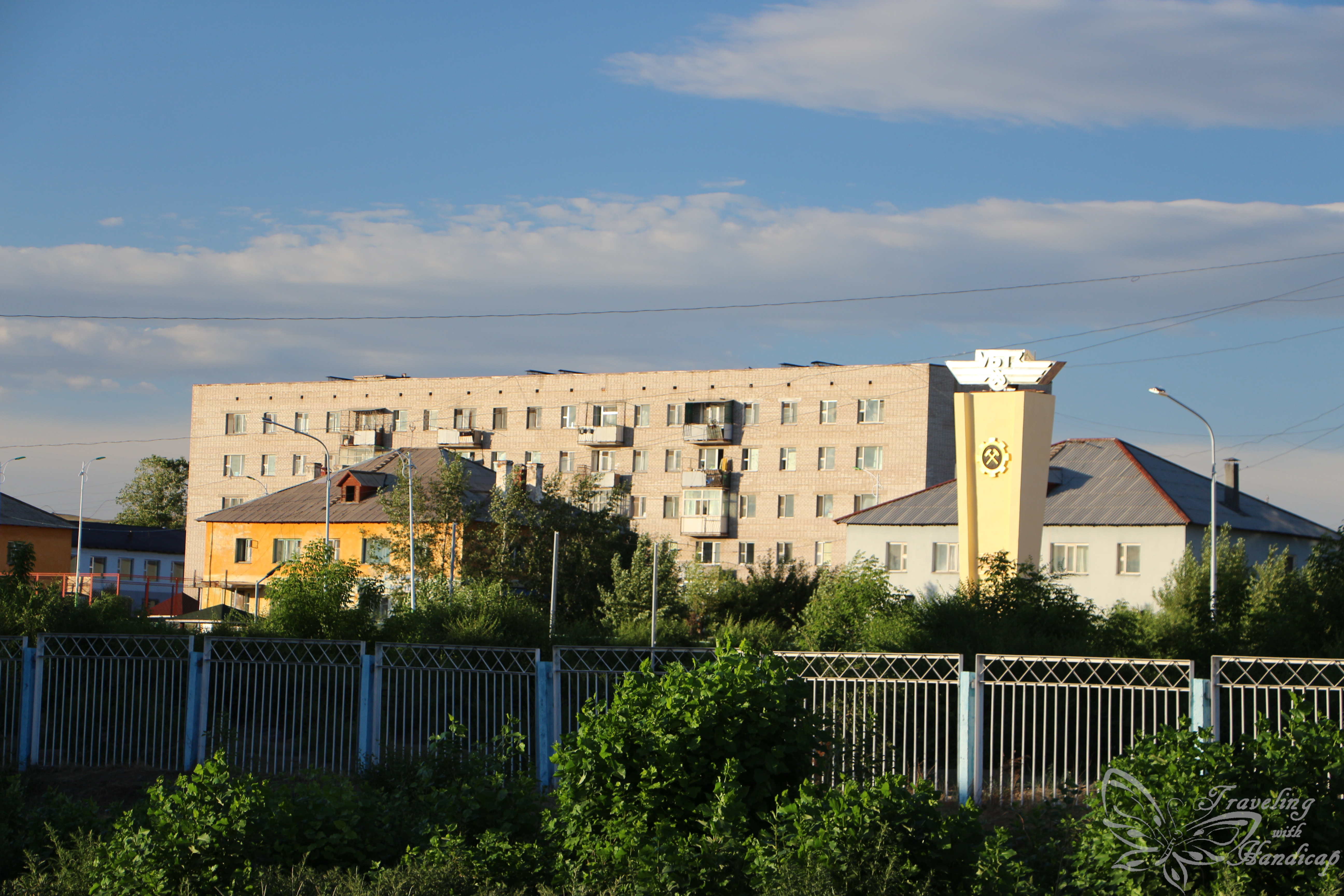
The Mongolian-Russian border crossing
Officers took our passports and kept them for hours whilst we waited in the cabins. While we waited, some military officers went along, asking for our nationalities, and checking for anything suspicious you might want to bring out of Mongolia. Due to their broken English and me being half-asleep, it was difficult to understand their questions. After getting back our (stamped) passports, we had to wait until the train finally left the station. I fought against tiredness, however, the ride to the Russian border town Naushki took 45 minutes. At one point, we must have crossed some kilometers of “no-man’s-land”.
Eventually, I fell asleep and was awakened by a Russian officer shouting “passports”. Another stop of 2 hours started by checking our passports and visa within the cabin (far less anxiety-inducing!). Then, other officers passed through the carrier with a big dark dog sniffing around. Subsequently, other officers asked questions about medication, drugs and any customs duties. I heard those officers would be really strict, opening and checking your baggage. This didn’t happen in my case, though. Maybe we were lucky, since there were many elder people on the carrier who didn’t bring medication.
After the border crossing process was complete by 2am, I happily fell asleep. The beds and temperature on this train were far more comfortable than on my first part from Beijing to Ulaanbaatar.
Traveling the Trans-Mongolian railway within Russia
Magnificent train ride along the Lake Baikal
Due to my late bedtime, I slept through while stopping in Dzhida and Ulan-Ude (45 minutes, at 6.20 am). When I woke up, shortly after sunrise, I looked out of the window to check the surroundings. It was quite different to northern Mongolia, really flat with many birch trees and colorful flowers. I finally arrived within Siberia. Shortly after I had my instant-breakfast, the Lake Baikal came into sight. The train tracks follow the southern coast of the lake for approximately 4 hours. During most of that time, I kept staring out of the window, taking photos.
There are many tiny villages along the coastline which do not have any proper streets. Moreover, I am not sure if people from these villages even have electricity and running water. Following the coastline, there were plenty of ruins or spots for fishing boats. My train passed some stations, maybe only local trains stop there once a day. Finally, the train stopped at the last bigger village at the lake, Slyudyanka, before heading inland. There is also a short distance of extra rail track available for tours along the lake, to get the perspective if you don’t travel along the Trans-Siberian railway.
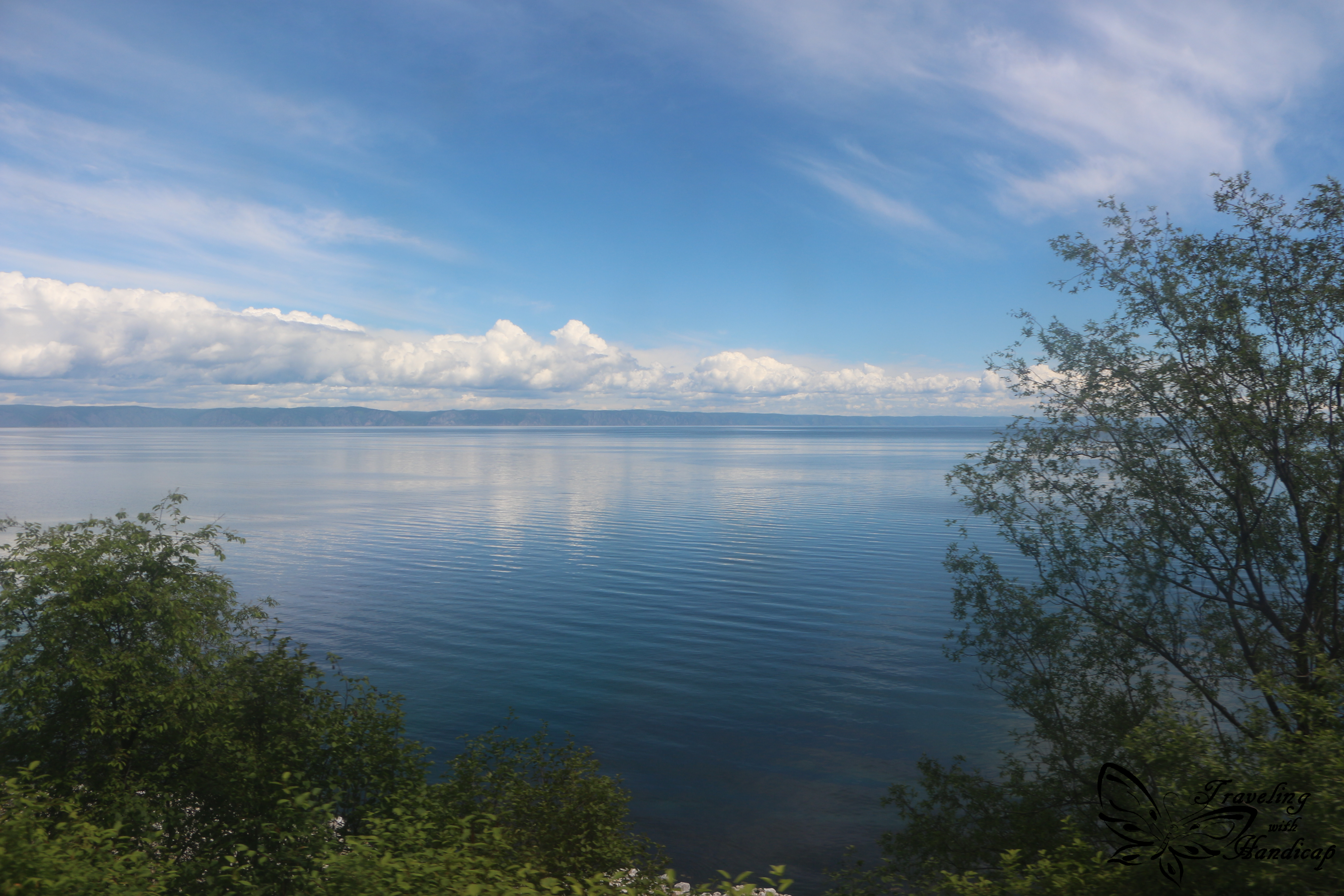


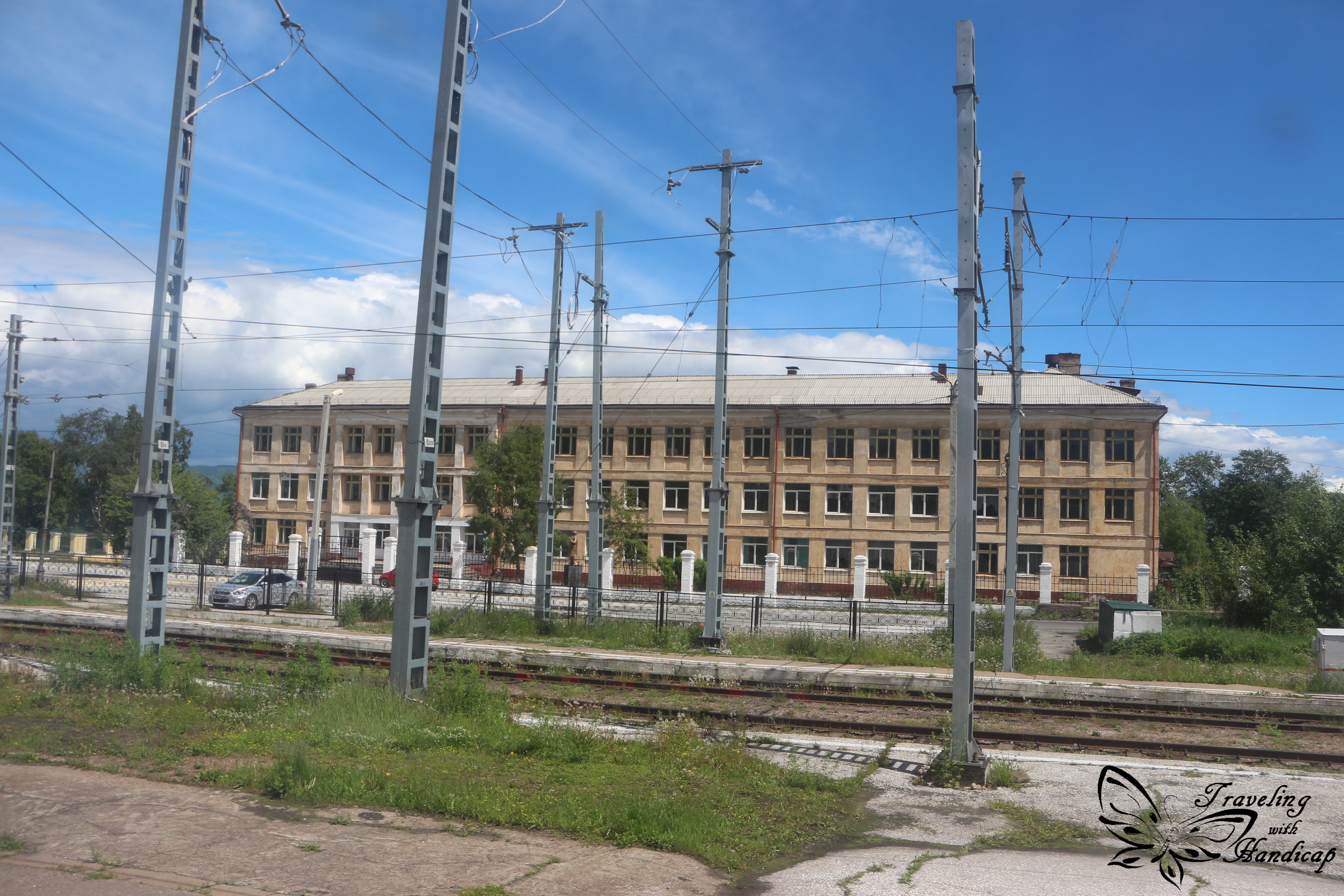
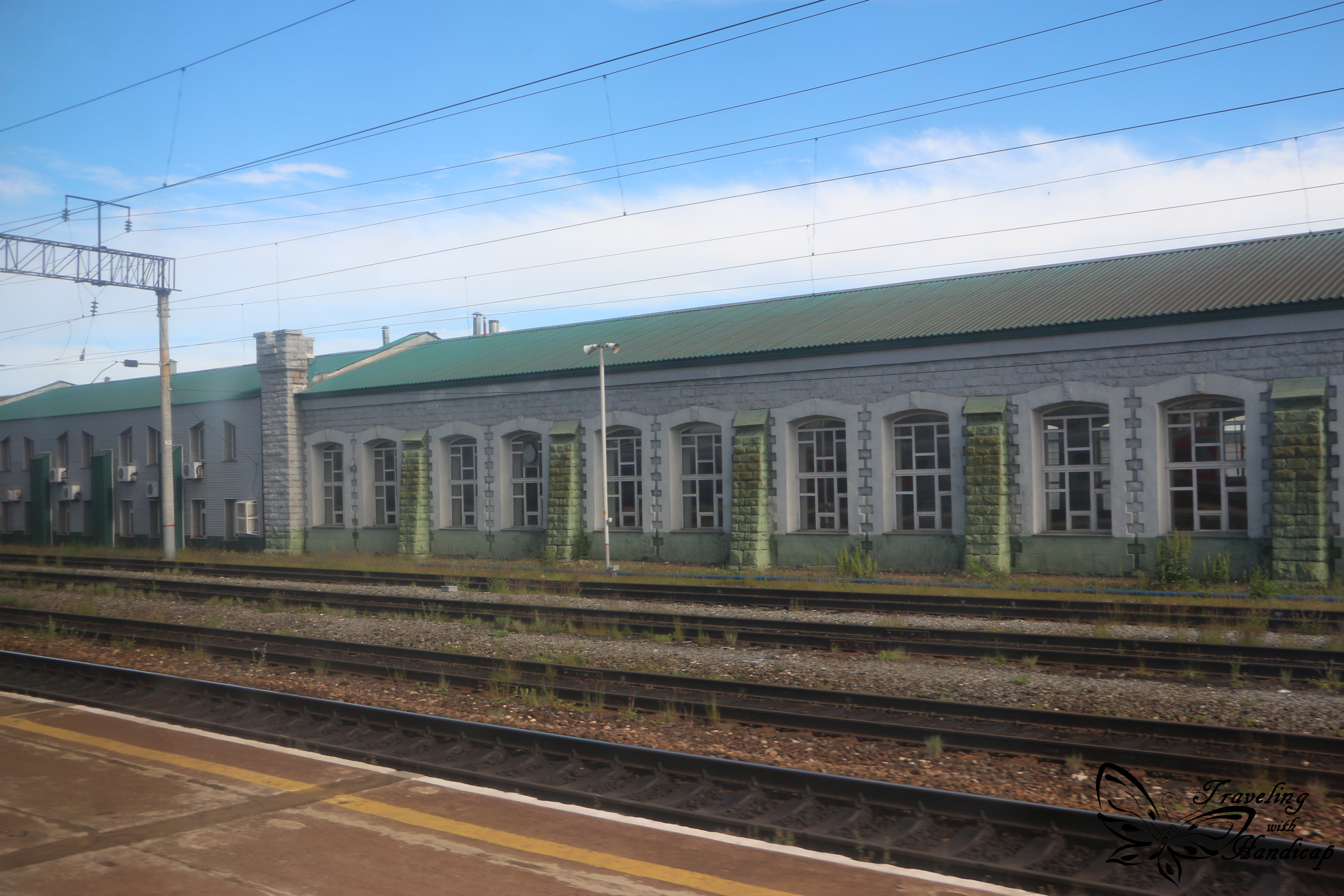

Arriving in Irkutsk
Irkutsk is not directly facing Lake Baikal, but connected to the lake through the Angara river. As soon as you arrive in Irkutsk and leave the station, plenty of taxi drivers try to explain that you only get to your designated place via taxi. However, if you book a hostel in the city center, there are public mini-busses available to get to the center. Furthermore, I share my experiences of Irkutsk and the Olkhon Island within Lake Baikal in an individual article.

